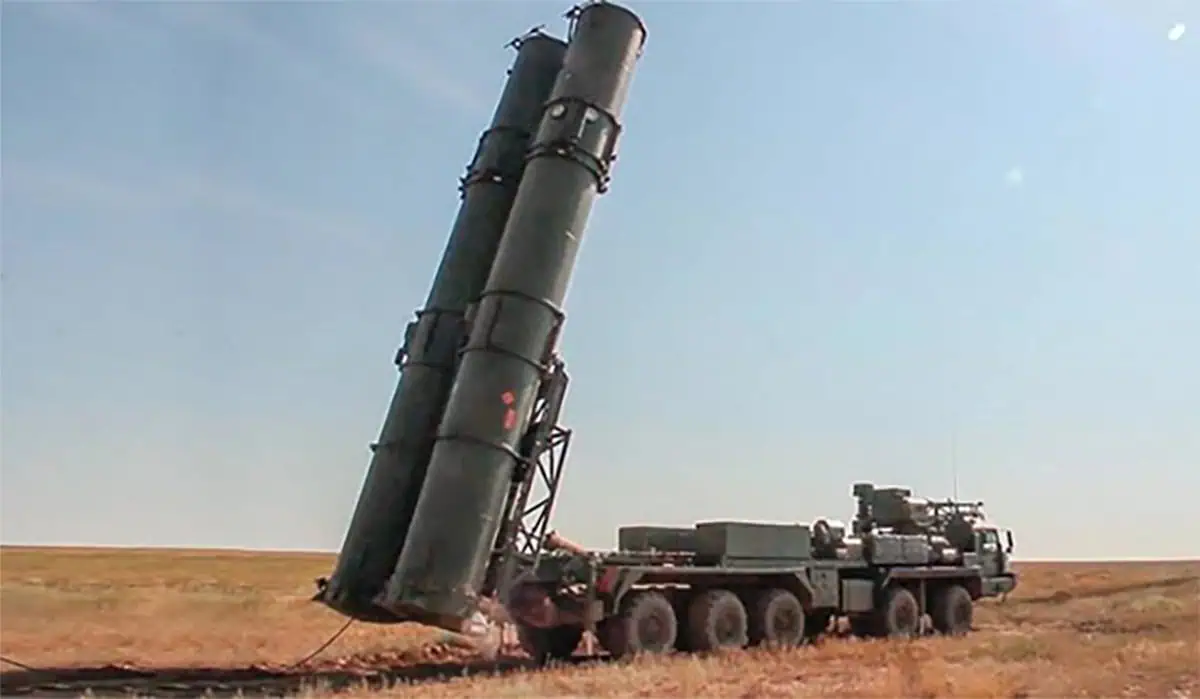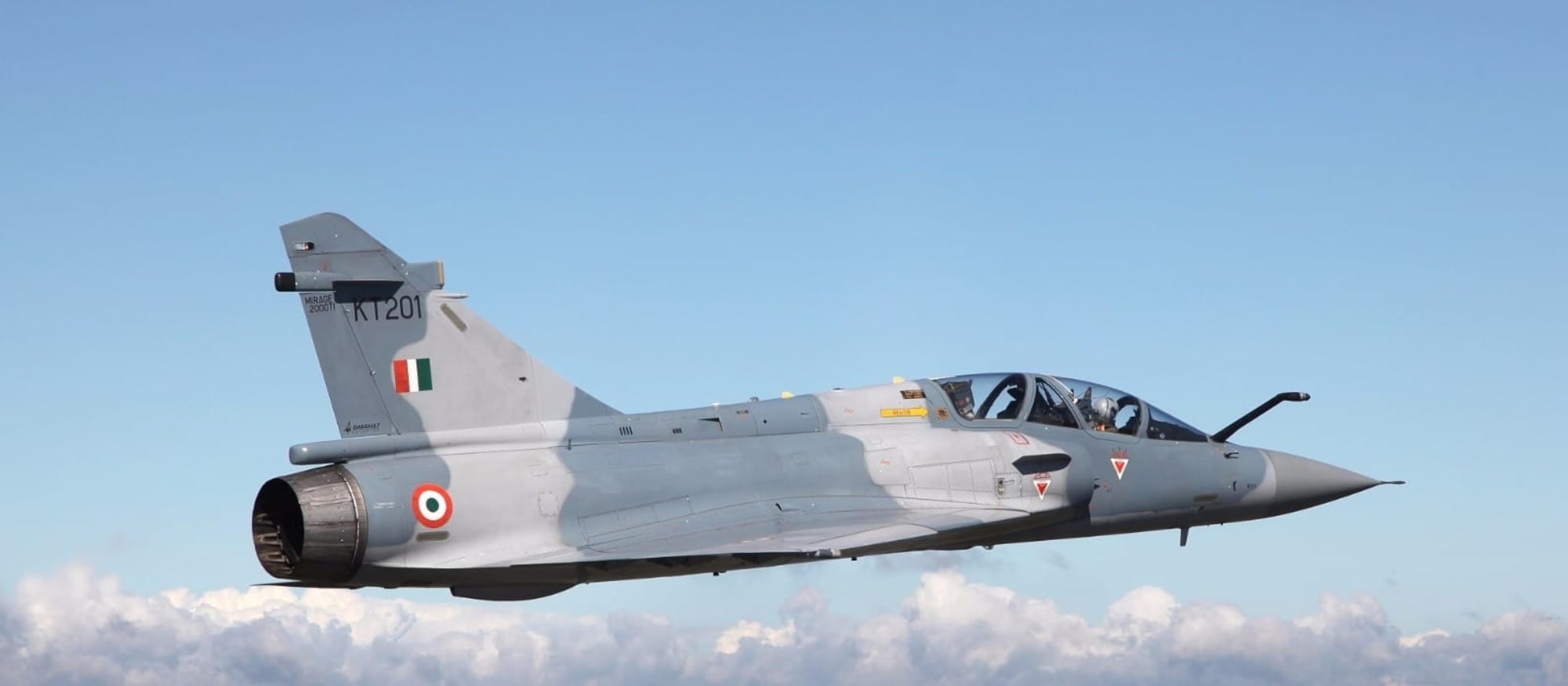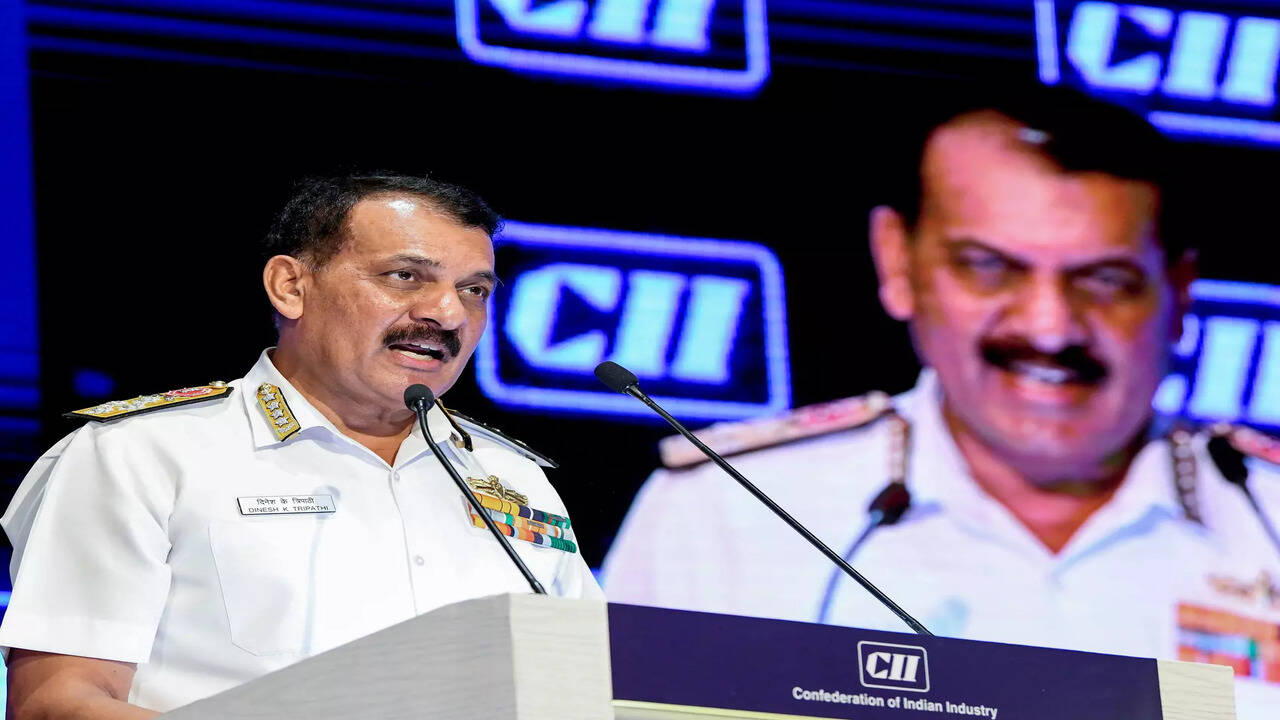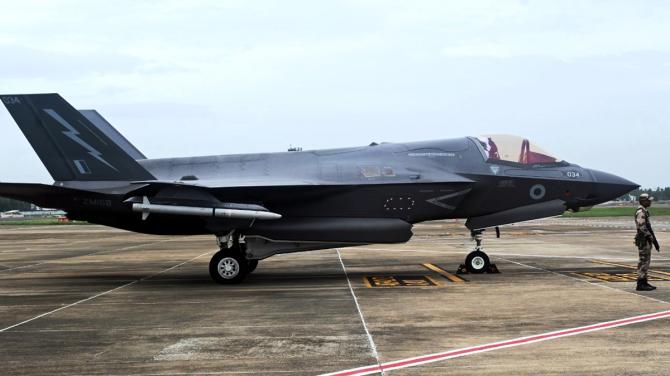SOURCE: RAUNAK KUNDE / NEWS BEAT / IDRW.ORG


India is actively considering bolstering its air defence capabilities through the acquisition of additional S-400 air defence systems from Russia, according to a report by the Asian News International (ANI). Furthermore, India has expressed a strong preference for procuring the advanced S-500 air defence system, which boasts a greater range and enhanced capabilities compared to the S-400. However, the sale of the S-500 would require approval from Russia’s top leadership, given its status as a cutting-edge strategic asset.
idrw.org was the first to report last year that Russia had offered India the opportunity for joint local production of the S-500 system, marking India as the first country globally to receive such an offer.
Continue readingSOURCE: RAUNAK KUNDE / NEWS BEAT / IDRW.ORG


As part of the ambitious “Super-30” upgrade program, the Indian Air Force’s Su-30MKI fleet is set to receive a significant technological boost with the integration of an advanced Mission Computer, positioning the aircraft ahead of its competitors. The Defence Avionics Research Establishment (DARE), a key laboratory under India’s Defence Research and Development Organisation (DRDO), is spearheading the development of cutting-edge avionics, including the new Digital Flight Control Computer (DFCC) for the Su-30MKI. This upgrade promises to enhance the aircraft’s mission capabilities, ensuring it remains a formidable multirole fighter in the modern battlefield.
The Su-30MKI, a mainstay of the Indian Air Force, has been equipped with DARE-developed avionics since its induction, including the Mission Computer cum Display Processor (MC-486) and DP-30MK. Developed in 1998, the current 32-bit mission computer handles critical functions such as mission-oriented computations, flight management, reconfiguration-cum-redundancy management, and in-flight system self-tests. Compliant with MIL-STD-1521 and 2167A standards, the software for this system was written in ADA language, a robust but now outdated choice by 2025 standards.
Continue readingSOURCE: RAUNAK KUNDE / NEWS BEAT / IDRW.ORG


The Indian Army has initiated a groundbreaking collaboration with a private sector company to develop low-cost anti-drone drones designed to counter larger enemy drones and loitering munitions, particularly those deployed in swarms. According to sources close to Indian Defence Research Wing (idrw.org), this innovative program is already underway, with plans for trials in the near future. Each anti-drone unit is projected to cost less than $500, featuring a small explosive payload that detonates upon proximity to a target drone within its range.
These drones are engineered for swarm-based operations, requiring no individual control, and can be launched from multiple platforms to neutralize incoming threats. This cost-effective solution aims to drastically reduce the financial burden of intercepting expensive loitering munitions, which often range from $20,000 to $350,000 per unit, while enhancing India’s aerial defense capabilities amid rising drone warfare threats.
Continue readingSOURCE: AFI


An article by RFI journalists Olivier Fourt and Franck Alexandre has unveiled a French counter-narrative to the widely reported outcomes of Operation Sindoor, the Indian Air Force’s (IAF) airstrikes on Pakistan on May 7, 2025. Based on anonymous military and industrial sources “directly involved in monitoring the operation,” the report suggests that India deliberately signaled its intentions to Islamabad to curb escalation risks, while accepting a controlled aerial confrontation. Presented on the sidelines of the Paris Air Show 2025, this narrative challenges Pakistan’s assertions of dominance and seeks to safeguard the Rafale fighter’s global reputation.
According to the RFI article, India launched Operation Sindoor with full awareness of the potential for escalation, communicating its plans to Pakistan beforehand to limit an uncontrolled bilateral conflict. This strategic move, if verified, explains the rapid mobilization of Pakistan Air Force (PAF) assets, including J-10CE and JF-17 fighters, and the dense activation of radar surveillance and surface-to-air defense systems. The tactic aligns with a controlled de-escalation doctrine, showcasing a nuanced approach that contrasts with the often oversimplified Western media portrayal of Indian military strategy. This level of strategic maturity, rarely highlighted, suggests India aimed to neutralize threats while avoiding a broader war.
Continue readingSOURCE: AFI


The Indian Air Force (IAF) operates a fleet of 45 Mirage-2000H/TH fighters, which remain a critical component of its combat capabilities despite their age. Acquired in the 1980s, these versatile 4th-generation jets are set to serve for another 15 years, with a planned retirement around 2040 following a mid-life upgrade completed in 2015.
However, the Mirage-2000’s primary beyond-visual-range air-to-air missile (BVRAAM), the MBDA MICA, is increasingly outdated compared to modern adversaries’ weaponry, such as China’s PL-15 and Pakistan’s AIM-120C-7. To maintain the fleet’s combat edge, the IAF should integrate the indigenous Astra Mk1 BVRAAM, developed by the Defence Research and Development Organisation (DRDO). This upgrade, feasible locally given Dassault’s reluctance to support integration and its push for the MICA-NG, aligns with India’s Atmanirbhar Bharat initiative and ensures the Mirage-2000 remains a potent platform against evolving threats.
Continue readingSOURCE: AFI


A promotional video for INS Tamal, the second ship of the Tushil-class frigates and an upgraded variant of the earlier Talwar- and Teg-class frigates, has highlighted the formidable capabilities of the BrahMos supersonic cruise missile. Set to be commissioned into the Indian Navy on July 1, 2025, the footage demonstrates the BrahMos striking warships from a near-impossible-to-intercept low altitude, skimming just 3-4 meters above the sea. This revelation underscores the missile’s strategic edge, making it a critical asset as the Navy bolsters its maritime dominance in the Indo-Pacific region.
INS Tamal, built at the Goa Shipyard Limited (GSL) in collaboration with Russia’s Severnoye Design Bureau, represents a significant upgrade over the Talwar- and Teg-class frigates commissioned in the early 2000s. The Tushil-class frigates feature advanced stealth features, enhanced radar systems, and an expanded weapon suite, including the BrahMos missile, vertical launch systems for Barak-8 missiles, and upgraded anti-submarine warfare capabilities. The ship, with a displacement of approximately 4,000 tons, is designed for multi-role operations, including anti-air, anti-surface, and anti-submarine warfare.
Continue readingSOURCE: AFI

In a significant move to enhance its tactical capabilities, the Indian Army is planning to establish dedicated First-Person View (FPV) platoons within every infantry battalion, according to recent reports circulating on social media platforms. This initiative aims to integrate advanced drone technology into ground operations, equipping infantry units with cutting-edge tools for reconnaissance, surveillance, and precision strikes. The introduction of FPV platoons reflects the Army’s commitment to modernizing its forces and adapting to the evolving nature of warfare, where unmanned systems play an increasingly critical role.
FPV drones, operated through a first-person perspective via real-time video feeds, offer soldiers enhanced situational awareness and the ability to engage targets with precision from a safe distance. These drones are compact, agile, and capable of navigating complex terrains, making them ideal for urban combat, counter-insurgency operations, and border security missions.
Continue readingSOURCE: PTI


During Operation Sindoor, Indian naval ships, submarines and aircraft were operationally ready and deployed, projecting strength and preparedness to deter any “potential actions from our western adversary” in the maritime domain, Navy chief Admiral Dinesh K Tripathi said on Friday.
“This rapid and measured response not only showcased our strategic reach and maritime dominance, but sent a clear message of resolve, forcing our adversary to plead for ceasefire, I would say, just in time,” Admiral Tripathi said in his address at an investiture ceremony at the Nausena Bhawan here.
Continue readingSOURCE: UNI


India today castigated the illegal Court of Arbitration and trashed its so-called supplemental award concerning Kishenganga and Ratle hydroelectric projects in Jammu and Kashmir.
“The illegal Court of Arbitration, purportedly constituted under the Indus Waters Treaty 1960, albeit in brazen violation of it, has issued what it characterizes as a supplemental award on its competence concerning the Kishenganga and Ratle hydroelectric projects in the Indian Union Territory of J&K,” the External Affairs Ministry said.
Continue readingSOURCE: PTI


State-run Mazagon Dock Shipbuilders Limited (MDL) has decided to acquire a controlling stake in Sri Lanka’s Colombo Dockyard PLC under a USD 52.96 million deal, a move that is expected to expand India’s strategic presence in the island nation.
MDL’s decision marks its first international venture and is seen as a major milestone in the company’s transformation from a purely domestic shipbuilder into a regional maritime player with global aspirations. “Located in the Port of Colombo, Colombo Dockyard PLC (CDPLC) gives MDL a strategic foothold in the Indian Ocean Region– a key maritime corridor,” the MDL said in a statement.
Continue readingSOURCE: PTI


Aviation engineers from the UK are arriving in Thiruvananthapuram to repair an F-35B Lightning jet of Britain’s Royal Navy as the aircraft continued to be stranded after making an emergency landing 12 days ago.
The aircraft is part of the HMS Prince of Wales Carrier Strike Group of the UK’s Royal Navy. The jet, worth over $110 million and known to be one of the most advanced fighters globally, made the emergency landing at Thiruvananthapuram airport on June 14.
Continue readingSOURCE: UNI


The final day of the India Space Congress (ISC) 2025 brought into sharp focus the growing duality of our times as humanity expands deeper into space, so must our vigilance to protect it.
Organised by the SIA-India, the third and concluding day was a decisive call to action to secure our space assets against evolving cyber threats, explore the transformational potential of bio-manufacturing in microgravity, and strengthen regulatory frameworks in SATCOM to invite greater investment and innovation.
Continue readingSOURCE: PTI


External Affairs Minister S Jaishankar on Friday spoke to his Iranian counterpart Seyed Abbas Araghchi and discussed the overall situation that emerged following the 12-day hostilities between Iran and Israel.
S Jaishankar also thanked Araghchi for Tehran’s assistance in evacuation of several hundred Indians from Iran. “Spoke to FM @araghchi of Iran this afternoon. Appreciate his sharing Iran’s perspective and thinking in the current complex situation,” S Jaishankar said in a social media post.
Continue readingSOURCE: PTI


The National Investigation Agency (NIA) has chargesheeted seven accused, including three absconders, in the December 2024 case related to the grenade attack on Gurdaspur Police Station by Babbar Khalsa International (BKI) terrorists, officials on Friday said.
The terror attack on Ghanie Ke Bangar Police Station in Batala, Gurdaspur district, Punjab, was claimed on social media by BKI operatives Harpreet Singh alias Happy Passia and Gurpreet alias Gopi, they said. US-based Passia, along with Pakistan-based terrorist Harwinder Singh alias Rinda as well as Shamsher Singh alias Shera alias Honey, are the three absconders chargesheeted by the NIA in the case on Thursday before a court in Mohali, the officials said.
Continue readingSOURCE: PTI


Prime Minister Narendra Modi will embark on a five-nation tour beginning July 2 to participate in the BRICS Summit in Brazil and expand India’s ties with several key nations of the Global South.
Besides Brazil, PM Modi will visit Ghana, Trinidad and Tobago, Argentina, Brazil, and Namibia during the eight-day trip, according to the Ministry of External Affairs (MEA). In the first leg of the visit, PM Modi will undertake a visit to Ghana from July 2 to 3.
Continue reading